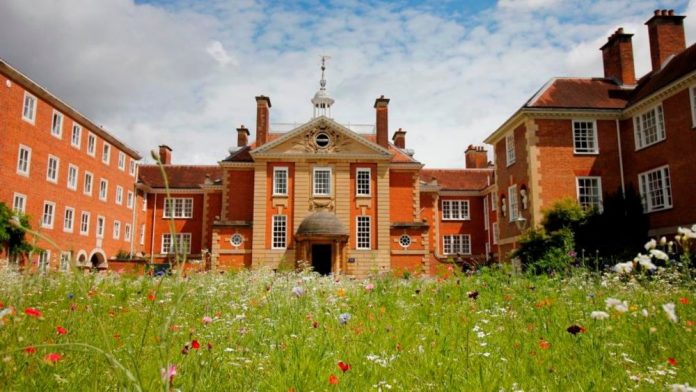Frustrated by the limitations of most contemporary architecture, a few architects have returned to classicism. Although they have suffered criticism and charges of pastiche from the architectural establishment, their buildings are often well received by the public. They have shown, in housing especially but in other building types, too, that classicism still offers a rich and adaptable architectural vocabulary.
The past few decades have seen an increasing discontent with modern architecture— with “concrete-and-glass” modernism in the tradition of Le Corbusier especially, but with all forms of building that use “modern” materials in 20th-century ways. Objectors point to the failures of 1960s’ and 1970s’ brutalist housing schemes, to the high heating and air conditioning costs incurred by users of buildings with glass curtain walls, to the short life of many concrete buildings. Above all, they are disappointed by the impoverished visual language of modernism. For some, the answer is to return to the classical tradition.
For many architects this was anathema. The central method of modernism—examine users’ needs, concentrate on function and let the building’s form follow that function— was central to their practice and beliefs. To turn back the clock to the 18th century, or to the Renaissance or even to the Romans, seemed to them retrogressive and irrelevant.
Morality and Architecture
In his influential book Morality and Architecture, British architectural historian David Watkin argued that modernist architecture has been discussed in terms of the philosophical idea of the Zeitgeist, or spirit of the age. Modernist architecture, it had been argued, was good and rational because it was adapted to the Zeitgeist and was based on society’s needs. Classical architecture, however, was condemned by the modernists because it grew from a past age, and therefore it was irrelevant or immoral today to design in such a style. Watkin and the defenders of classicism, though, point to the fact that the classical style embodies civilized values and provides a vocabulary of architecture that can be endlessly adapted.
Objections to classicism
On the one hand, one set of objections comes from those who believe that classicism is simply a set of ornaments that are stuck on to a building in a pastiche of Georgian or Renaissance architecture. Proponents of classicism, such as contemporary British architects Quinlan Terry and Robert Adam, on the other hand, claim that classicism is actually highly functional. Classical house plans work and can be adapted to suit modern requirements; classical details, such as moldings and orders (see The orders), can be used to guide people through a building—to signpost the difference between a living room door and a cupboard door, or to point up a building’s main entrance.
Objectors also point out that the classicism of past ages was used for a relatively narrow range of buildings—such as houses, churches and town halls. Can classical architecture really be adapted for airports, factories and other contemporary types of buildings? Classicists answer that their way of working is highly adaptable. The classical architects of the Renaissance were very inventive, and today’s architects should be inventive, too.
Classicism and light
One of the beauties of classical architecture is the way in which its forms— moldings, rustication, columns—catch the light and shade, giving interest and satisfaction to a façade or interior in a way that changes with the moving sun. This was vital in times when there was little or no artificial light, but still gives buildings richness today. Quinlan Terry has pointed out, for example, how the combination of circles and squares at the top of a Tuscan column creates a combination of hard and soft shadows.
Choice of materials
Another question surrounds materials. Modernist architecture and the host of styles and outlooks of the past few decades—from postmodernism to deconstructivism—make use of all the materials today’s technology can produce. Classicists tend to use traditional materials—stone, brick, tile, wood, lime mortar. They argue that not only do these materials work visually in classical buildings, but they are also longer lasting and cheaper to maintain than modern concrete. And when they age, they do so more gracefully.
And to the surprise of many, there are still craftworkers who not only can work these materials with skill, but do so with pleasure. Their work may cost more than that of conventional builders, but it lasts and works. These craftspeople have responded to the plans and instructions of architects, such as Raymond Erith, Terry and Adam, who have kept classicism alive.
“Although the spiritual, political, material and temporal influences are crystallized in wood and stone, and expressed in classical forms, the classical grammar remains neutral; like the paint on the artist’s palette.”
Quinlan Terry, in his essay “Seven Misunderstandings About Classical Architecture”
The art of compromise?
Predictably, many in the architectural establishment have been unimpressed. They point to such schemes as Terry’s mixed-use development at Richmond Riverside, London, where elegant, classical façades hide modern, open-plan offices. This, opponents said, was architectural pastiche of the worst kind. Defenders pointed out that the design was a compromise, but one that worked in practical terms— passers-by could enjoy the façades, while office workers benefited from the usable spaces within.
And perhaps the verdict on contemporary classicism is a compromise, too. It works in a range of buildings in the hands of a master designer such as Raymond Erith. More widely, Classical houses are still satisfying and rewarding for many residents. Classicism can work well in sensitive historical environments, from Oxford, England, to Boston, Massachusetts.
The use of traditional materials, if they are sourced locally, also makes sense in terms of reducing transport costs and carbon emissions. Traditional buildings, too, are often cheaper to heat and cool than modernist or high-tech ones built with more lavish areas of glass. A world that can accept the bizarre angles and spaces of deconstructivism and the wayward ways of postmodernism must have a place for classicism, too.
